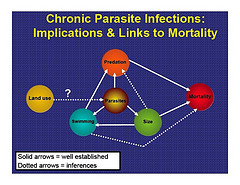Environment Fishery
Originally posted Aug 23, 2011 1:15 PT
Updated Aug. 23, 2011, 2104 PT.
.Just after noon on August 22, 2011, the Department of Fisheries and Oceans quietly announced that the it was closing the Pacific region recreational halibut fishery as of midnight Sept. 5, 2011 cutting off charter, lodge and recreational anglers from the fishery.
The commercial halibut fishery will continue, as planned, until November 18, 2011.
At the same time, DFO continued the highly controversial program of allowing those recreational fishers who can afford it to “‘lease” quota from the commercial fishery.
The closure notice posted on the DFO website on August 22. says:
Throughout the 2011 recreational halibut fishing season, the Department has reviewed in-season monthly catch estimates for the recreational halibut fishery. Catch information indicates that the recreational share of the Total Allowable Catch will be achieved in August. Therefore, recreational fishing for halibut under the BC tidal water licence will close effective 23:59 hours September 5, 2011 for the balance of the year. 2012 management actions will be developed this fall and announcements will be made in early 2012.
Variation Order 2011 – 404 is in effect
DFO did not issue a news release on the closure and the opportunity to
lease, instead only posting the notices on the official notices to
fishery site. That meant that many recreational fishers did not learn
about the closure until the story broke in the British Columbia news
media almost 24 hours later.
Yet at the very same time, DFO did issue a news release, at 155 pm, also on August 22, about a shell fish closure on the St. Lawrence.
It is the earliest date that the recreational halibut fishery has been closed. Last year, the recreational halibut fishery closed on October 18.
Although the total halibut biomass is considered healthy over the long term, the stocks are low at the moment, probably due the lifecycle of the fish, and most of the existing stock is usually too small for harvest.
An internal memo from the Department of Fisheries and Oceans, dated Sept. 1, 2010, obtained by Northwest Coast Energy News under the Access to Information, outlined three possible closure dates for the recreational halibut fishery in 2010.
The memo gave the deputy minister three options for that year, September 1, October 1 and “no closure” which would mean that the closure would have come on the traditional date of December 1.
The documents predict the consequences for the recreational fishery if it was closed on Sept. 1, 2010 consequences that are likely to happen this year.
“An end of August closure does not allow time for the recreational community to make contingency plans or to inform clients in a timely manner,” a problem that recreational fishers and charter operators have been predicting since the protest meetings last winter.
Since 2003, the Canadian halibut harvest has been divided between the commercial fishery, which gets 88 per cent and the recreational fishery, which includes lodges, charters and individual anglers at 12 per cent. The recreational fishery has disputed that division since it began. The recreational halibut fishery has generally exceeded its quota for the past few years.
Thus the DFO memo says that: “Closing the recreational fishery at the end of August would reduce the potential recreational fishery overage significantly. This would assist in Canada’s commitment to managing within the TAC” (the total allowable catch set by the International Pacific Halibut Commission which sets catch limits for the Pacific US states, British Columbia and Alaska)
The DFO memo adds that an end of August closure would: “Although the recreational fishing community has been advised of a possible in-season closures, there will be significant economic impacts in the fishery and there are concerns about the regular sports fishermen who continue to fish in the latter part of the year.”
(more to come)

 The study, which took place on the West Fork Smith River concluded that heavy loads of parasites can affect salmon growth, weight, size, immune function, saltwater adaptation, swimming stamina, activity level, ability to migrate and other issues. Parasites drain energy from the fish as they grow and develop.
The study, which took place on the West Fork Smith River concluded that heavy loads of parasites can affect salmon growth, weight, size, immune function, saltwater adaptation, swimming stamina, activity level, ability to migrate and other issues. Parasites drain energy from the fish as they grow and develop.